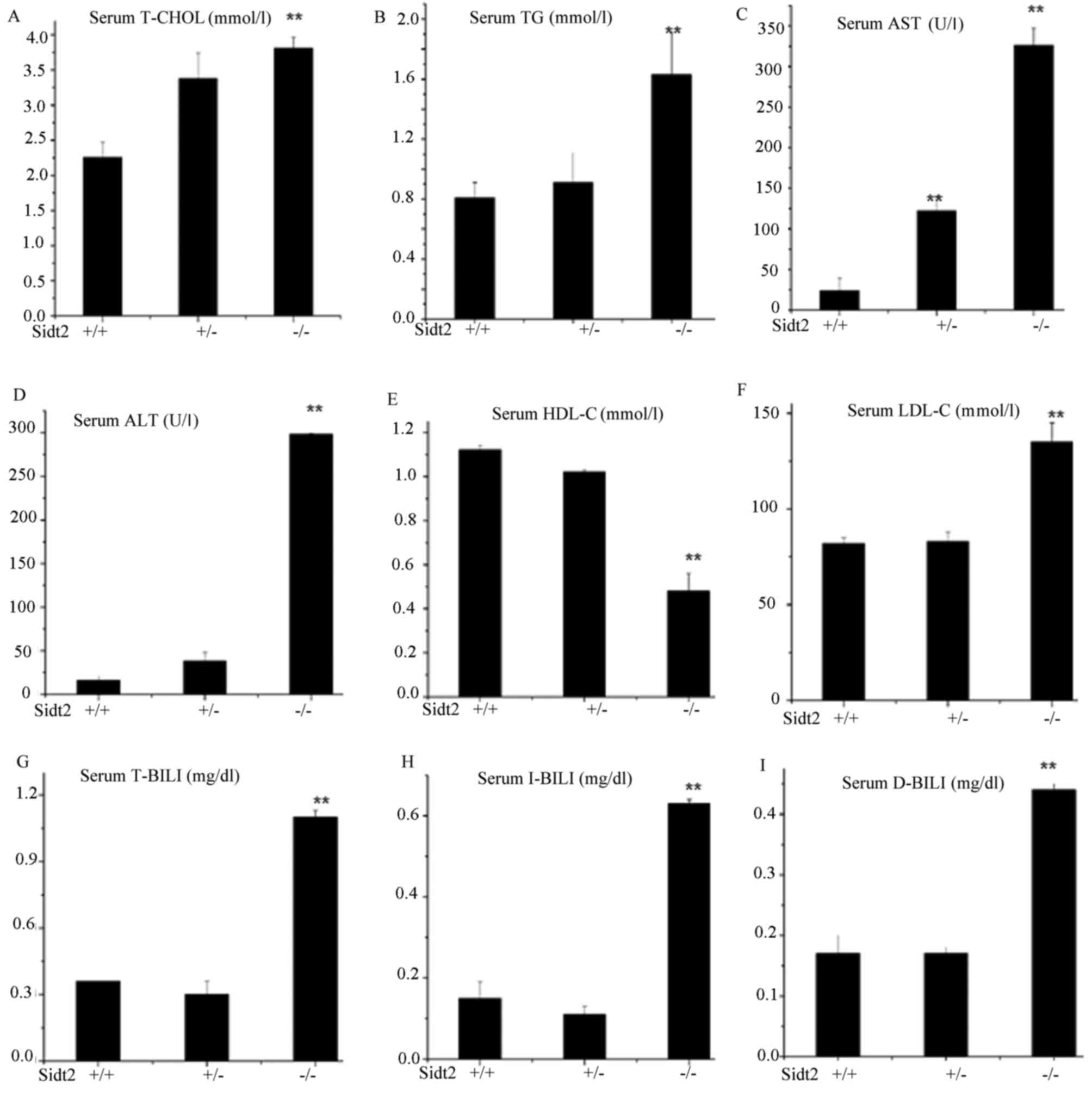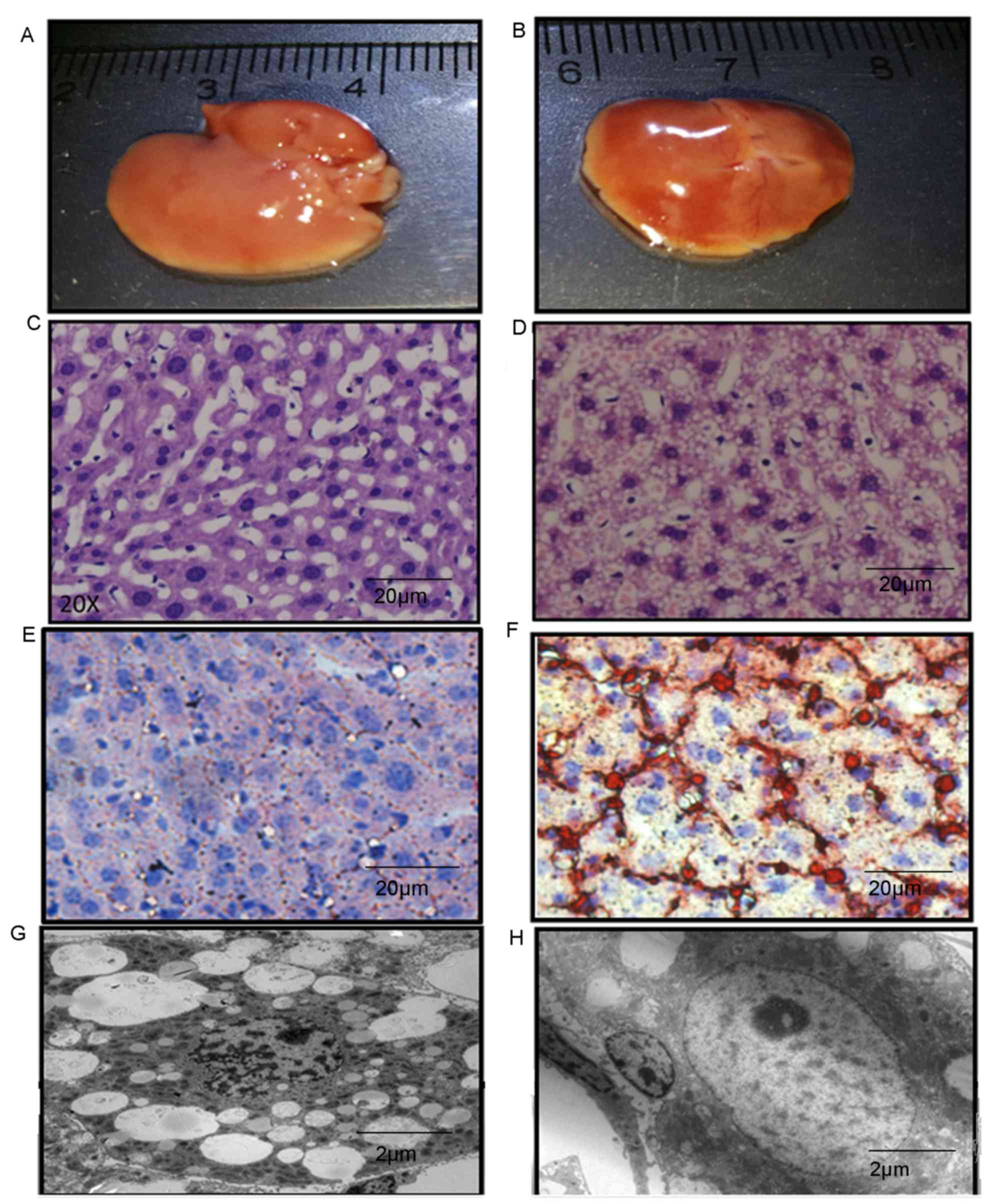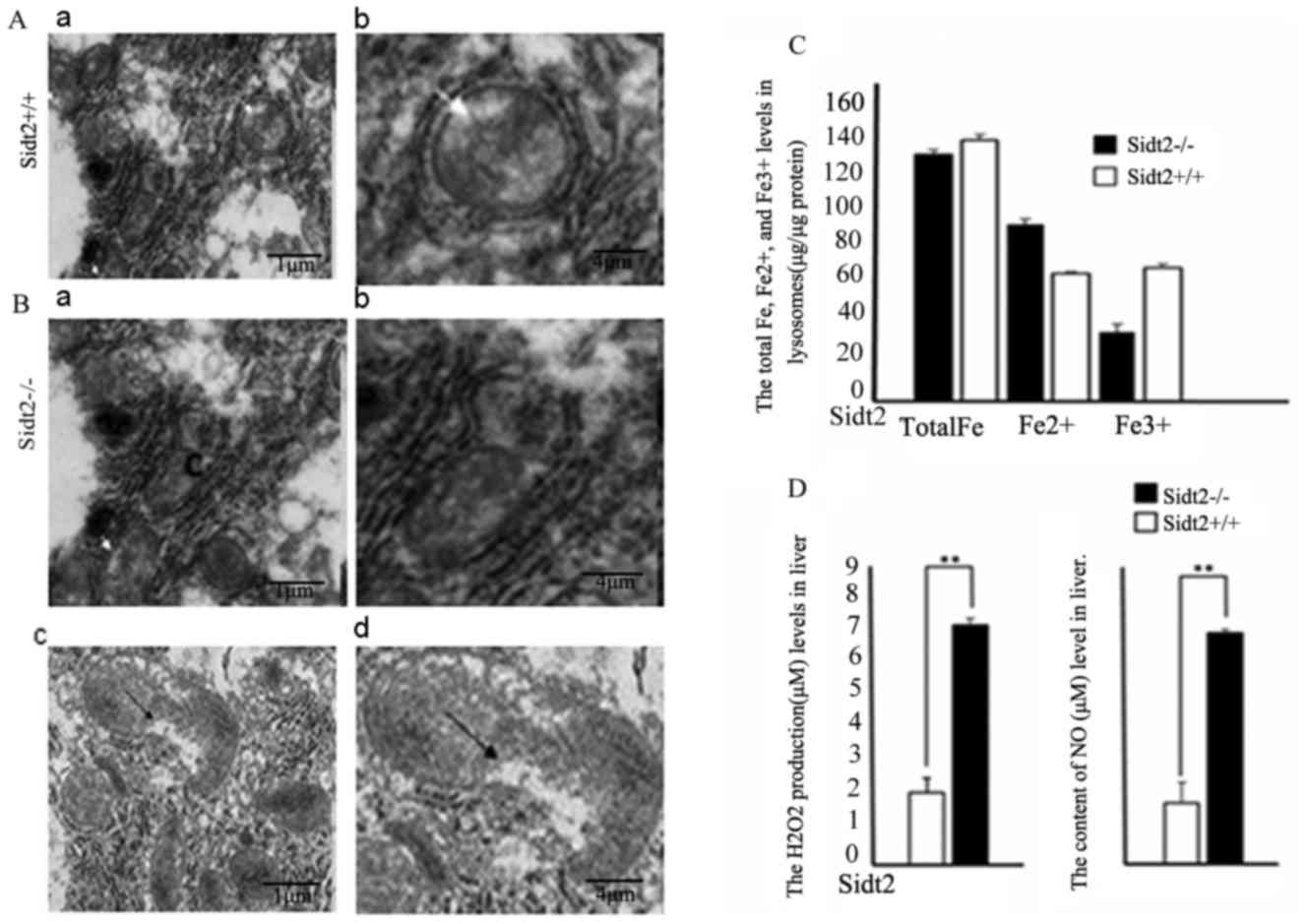Changes of lysosomal membrane permeabilization and lipid metabolism in sidt2 deficient mice
- Authors:
- Published online on: May 18, 2018 https://doi.org/10.3892/etm.2018.6187
- Pages: 246-252
-
Copyright: © Meng et al. This is an open access article distributed under the terms of Creative Commons Attribution License.
Metrics: Total
Views: 0 (Spandidos Publications: | PMC Statistics: )
Total PDF Downloads: 0 (Spandidos Publications: | PMC Statistics: )
Abstract
The SID1 transmembrane family member 2 (sidt2) deficient mouse model was used to investigate the function of sidt2 in lysosomal membrane permeabilization and lipid metabolism of liver tissue. The mouse model was established by Cre/LoxP technology. Enzymatic methods were used to analyze the sidt2‑/‑ mouse serum lipids, aspartate transaminase, alanine transaminase and serum bilirubin, compared with sidt2+/+ mice. Defective lipid metabolism and damaged liver functions were observed in the sidt2‑/‑ mice. By using hematoxylin and eosin and Oil Red O staining, changes of morphology were observed in sidt2‑/‑ mice with optical microscopy. Transmission electron microscopy was also used. Hepatic steatosis and partial liver tissue apoptosis were observed. The tissue distribution of sidt2 protein and mRNA was measured in knockout mice. The results indicated that negligible sidt2 mRNA and protein expression were observed in sidt2‑/‑ mice, and that sidt2‑/‑ mice had abnormal liver functions. Transmission electron microscopy revealed membrane lipid droplets in the liver cell cytoplasm, and some apoptotic body formation. These results demonstrated that absence of the lysosomal membrane protein sidt2 led to changes in lysosomal membrane permeabilization and lipid metabolism.













